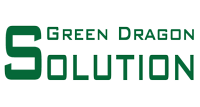The Diversity of Language and Overcoming Barriers to the Design Process
Imagine your global company has multiple locations in Japan, China, Germany, France, United States and Russia using the same project and database in their own native language. This is the kind of very real challenge that many organizations are dealing with – maybe you included? At the same time traditionally dominant business languages are undergoing a huge shift as the economic dominance of countries shift, affecting not just the opportunities for fresh new export markets, but also new design and business partners.
Languages for business
The vast growth in China’s economy has put Mandarin Chinese high on the list for must-learn languages. The reality is that you are unlikely to have the 2,200 hours required to become proficient. Maybe you already speak English and German or French for example? But the world is changing and so are the languages that are becoming more important for business. What you learned back at school/college might simply be associated with the wrong countries of commerce.
The scope of language
- 7,000 different languages estimated
- 2,200 languages in Asia, with Europe having less than 260
Language dominance
According to UNESCO (The Unite Nations’ Educational Scientific and Cultural Organization) the world’s most widely spoken languages by number of native speakers and as a second language are as follows:
- Mandarin Chinese
- English
- Spanish
- Hindi
- Arabic
- Bengali
- Russian
- Portuguese
- Japanese
- German
- French
Language problems in the design process
You’ve likely experienced working with colleagues or others in the supply chain involved in the design process that don’t have the advantage of speaking the same language as you in a proficient way. It’s one thing being able to understand simple greetings, but interpreting design information is an entirely different ball game. The upshot is that it can cause big problems when handling design data. Our experience with designers, engineers and engineering management, is that it’s hugely helpful to be able to switch languages easily in their design environment. This is one thing that we have gone to great efforts to enable within E3.series – you change the setting in a single location and your entire library of design data is in the chosen language.
This a huge bonus for those of us still awaiting delivery of a Babel Fish, the fictitious animal that performs instant translations in The Hitch Hikers Guide to the Galaxy
Source http://blog.zuken.com/index.php/2015/03/the-diversity-of-language-and-overcoming-barriers-to-the-design-process/
